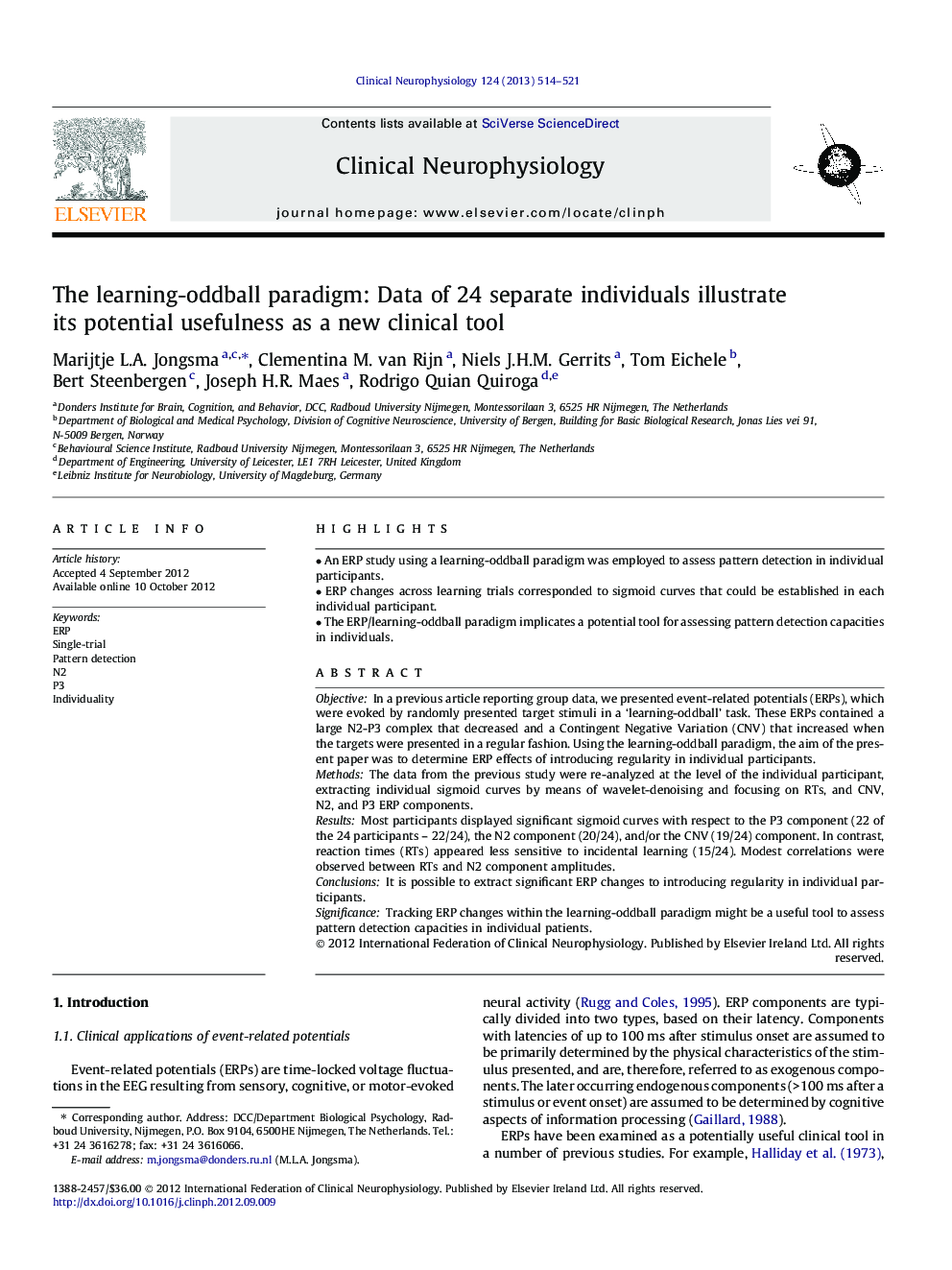| Article ID | Journal | Published Year | Pages | File Type |
|---|---|---|---|---|
| 3044363 | Clinical Neurophysiology | 2013 | 8 Pages |
ObjectiveIn a previous article reporting group data, we presented event-related potentials (ERPs), which were evoked by randomly presented target stimuli in a ‘learning-oddball’ task. These ERPs contained a large N2-P3 complex that decreased and a Contingent Negative Variation (CNV) that increased when the targets were presented in a regular fashion. Using the learning-oddball paradigm, the aim of the present paper was to determine ERP effects of introducing regularity in individual participants.MethodsThe data from the previous study were re-analyzed at the level of the individual participant, extracting individual sigmoid curves by means of wavelet-denoising and focusing on RTs, and CNV, N2, and P3 ERP components.ResultsMost participants displayed significant sigmoid curves with respect to the P3 component (22 of the 24 participants – 22/24), the N2 component (20/24), and/or the CNV (19/24) component. In contrast, reaction times (RTs) appeared less sensitive to incidental learning (15/24). Modest correlations were observed between RTs and N2 component amplitudes.ConclusionsIt is possible to extract significant ERP changes to introducing regularity in individual participants.SignificanceTracking ERP changes within the learning-oddball paradigm might be a useful tool to assess pattern detection capacities in individual patients.
► An ERP study using a learning-oddball paradigm was employed to assess pattern detection in individual participants. ► ERP changes across learning trials corresponded to sigmoid curves that could be established in each individual participant. ► The ERP/learning-oddball paradigm implicates a potential tool for assessing pattern detection capacities in individuals.
